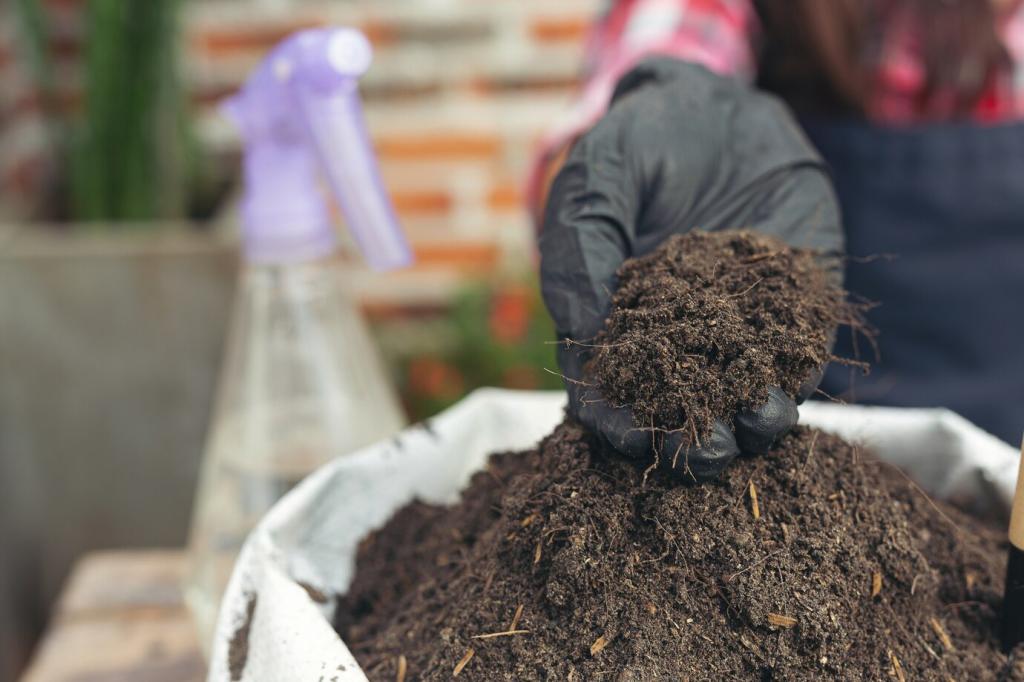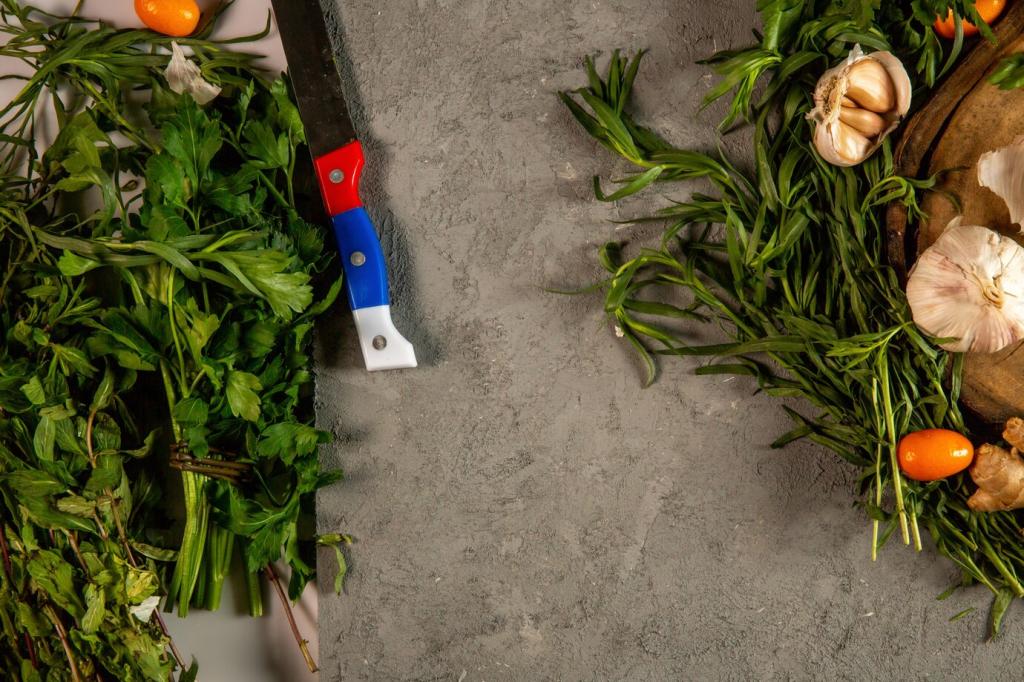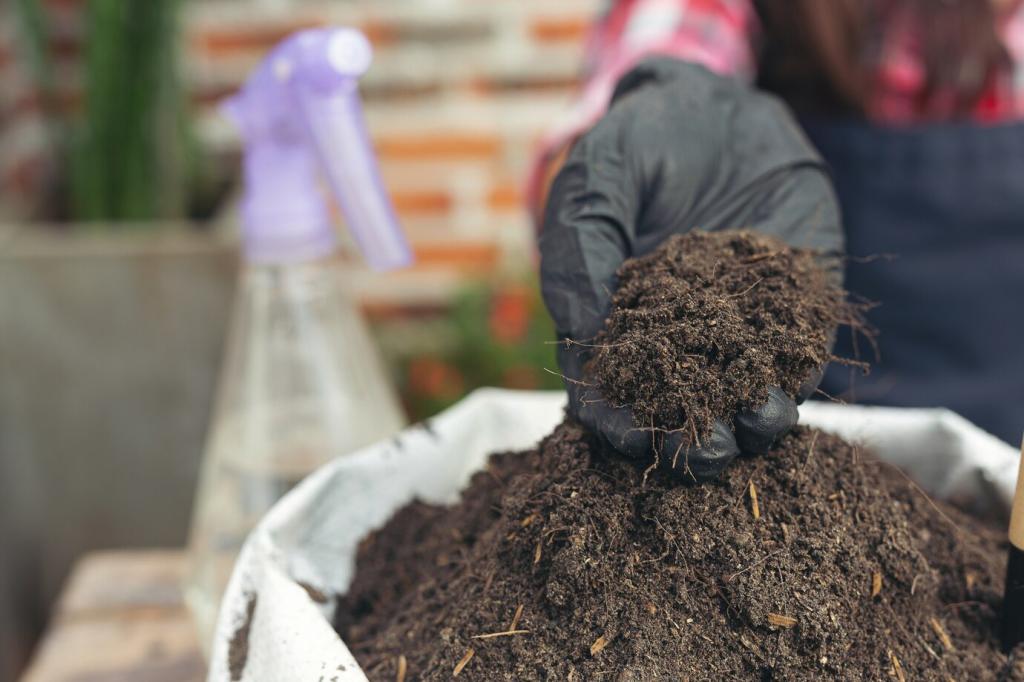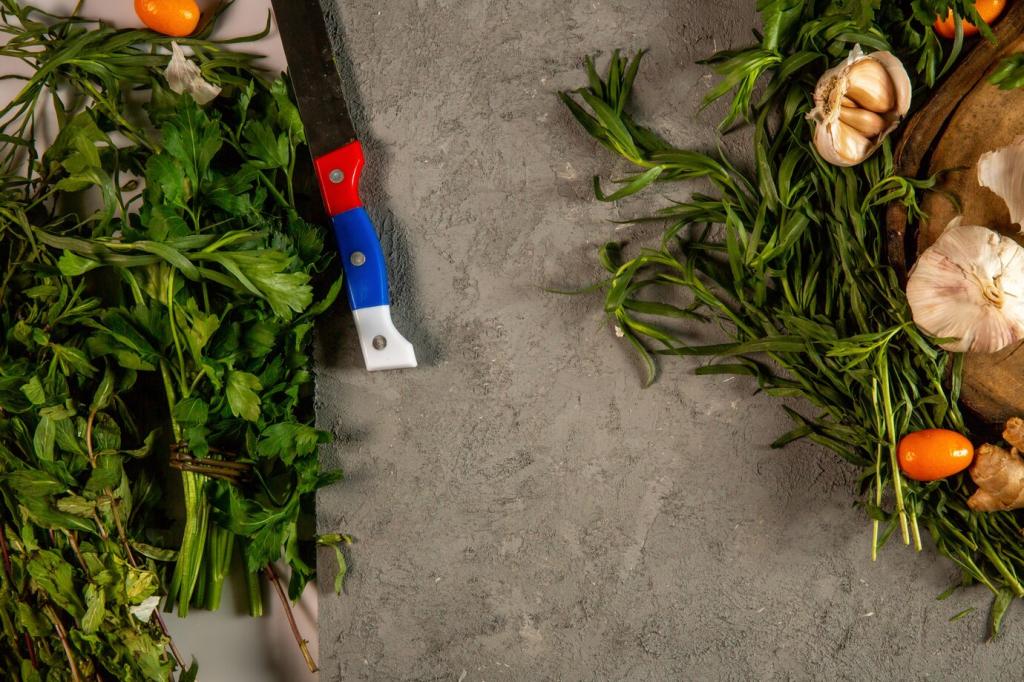Balcony Composting for Urban Living: Turn Scraps into Soil
Choose the right container
Pick a lidded, ventilated container between 10–30 liters, with a drip tray to protect your balcony floor. Opaque bins reduce algae, while sturdy handles make turning easier in tight corners.
Greens and browns basics
Balance nitrogen-rich greens like veggie peels and coffee grounds with carbon-rich browns like shredded cardboard and dry leaves. Aim for two to three parts browns per part greens by volume.
Finding space without clutter
Tuck your bin beneath a bistro table, beside a planter, or stack modular bins vertically. Keep walkways clear, anchor the lid, and leave room for watering cans and seating.
Carbon–nitrogen sweet spot
Browns feed carbon to microbes; greens deliver nitrogen for growth. If it smells sour, add browns. If it looks dry and stalled, add a little chopped greens.
Moisture and oxygen control
Aim for a wrung‑out sponge feel. Mist if dusty; add shredded paper if soggy. Drill small side holes and gently stir weekly to refresh oxygen without messy spills.
Temperature and speed on a balcony
Warm weather speeds decay, but extreme heat dries bins. Shade the container on hot days and keep it off cold concrete with a wooden riser during cooler months.

Vermicomposting on the Balcony: Red Wigglers to the Rescue
Red wigglers love 55–77°F (13–25°C). Shade the bin from direct sun, add breathable bedding, and avoid rainstorms by keeping the lid snug but ventilated.


Vermicomposting on the Balcony: Red Wigglers to the Rescue
Start with small handfuls of chopped scraps once or twice a week. If food remains after a week, reduce portions. Always cover feedings with dry bedding.
Weather-Savvy Composting for Urban Balconies
Provide midday shade using a planter or screen, mist bedding lightly, and add extra browns to prevent soggy, anaerobic zones. Elevate the bin to encourage airflow underneath.

From Bin to Balcony Garden: Using Your Compost
Blend finished compost at 10–20% with quality potting soil for leafy greens, herbs, and flowers. Sieve chunky pieces and return them to the bin to finish breaking down.
From Bin to Balcony Garden: Using Your Compost
Sprinkle a thin layer around container plants and water in gently. Top-dressing feeds slowly, retains moisture, and revives tired balcony planters between repottings.
